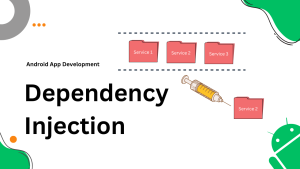Introduction:
Android Jetpack is a suite of libraries, tools, and guidance provided by Google to simplify Android app development, improve code quality, and enhance performance. In this blog, we will explore some key Jetpack components, including ViewModel, LiveData, Data Binding, Paging, and WorkManager. We’ll discuss how these components empower developers, improve app architecture, and provide better performance and user experiences.
ViewModel:
ViewModel is a Jetpack component that helps manage UI-related data and handles the configuration changes gracefully. It separates the UI logic from the UI components (like activities or fragments) and retains the data during configuration changes, such as screen rotation. Benefits of ViewModel include:
- Preserves data across configuration changes, eliminating the need to handle complex data retention manually.
- Improves separation of concerns by keeping UI-related data and logic separate from UI components.
- Facilitates testability by providing a clear separation between the UI and business logic.
LiveData:
LiveData is a data holder class that allows for observation of data changes. It is lifecycle-aware, meaning it respects the lifecycle of UI components and automatically updates the UI when the data changes. Key advantages of LiveData include:
- Ensures data consistency by only updating the UI components when they are active and in the correct state.
- Prevents memory leaks by automatically removing observers when their associated lifecycle is destroyed.
- Simplifies data updates and reduces boilerplate code by providing built-in support for data observation.
Data Binding:
Data Binding is a Jetpack library that allows for declarative binding of UI components to data sources in XML layouts. It enables the direct connection between UI elements and the underlying data, reducing the need for manual view manipulation. Benefits of Data Binding include:
- Improves code readability by removing the need for repetitive findViewById() calls and setting up event listeners.
- Enables two-way data binding, allowing for automatic synchronization between UI elements and data sources.
- Enhances productivity by reducing the amount of boilerplate code required for UI updates and data binding.
Paging:
Paging is a Jetpack library that facilitates efficient loading and displaying of large data sets, such as lists or grids, in a performant manner. It provides seamless pagination and data loading on demand. Key advantages of Paging include:
- Enables smooth scrolling and faster data loading by fetching data incrementally and only when needed.
- Simplifies the implementation of endless scrolling or pagination mechanisms in RecyclerViews.
- Provides support for both local and remote data sources, allowing for flexible data loading strategies.
WorkManager:
WorkManager is a powerful Jetpack component for scheduling and managing background tasks. It supports a variety of task types, such as one-time or periodic tasks, and provides robust execution guarantees. Key benefits of WorkManager include:
- Ensures task execution, even in scenarios like device reboots or app restarts.
- Handles system optimizations and battery optimizations to provide a balance between app functionality and device resources.
- Simplifies the scheduling and chaining of background tasks, enabling the creation of complex workflows with ease.
Conclusion:
Android Jetpack Components provide a comprehensive set of libraries and tools to simplify and enhance Android app development. In this blog, we explored key components such as ViewModel, LiveData, Data Binding, Paging, and WorkManager. By leveraging these components, developers can build robust, maintainable, and high-performance applications with improved code quality and better user experiences. Embrace the power of Android Jetpack and elevate your app development skills to the next level.




